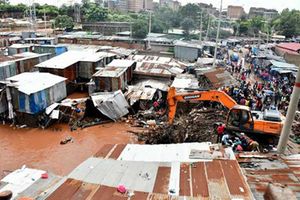Tension over Nile waters rises
What you need to know:
- Ethiopia shrugs off protests from groups opposed to building of dam on the river
Ethiopia inaugurated a power plant as tension rose on Nile basin despite rifts on water sharing agreement with downstream countries.
The country launched a new hydro dam on the source of Blue Nile river basin in western Ethiopia, Tana Beles.
Ethiopia contributes 86 per cent of Nile water.
The country officially inaugurated new hydro plant called Tana Beles, which have a capacity of generating 460 megawatts. Beles is located around 500km from Addis Ababa in western Ethiopia.
Nile River basin states are battling over the water-sharing rights after Egypt and Sudan refused to sign a new pact. The new pact allows all the basin states to use the water equitably.
Ethiopia’s new dam Tana Beles uses water from Lake Tana, which significantly contributes water to River Nile.
During the inauguration, Prime Minister Meles Zenawi said the completion of this new dam marks the realisation of Ethiopia’s hundred years of effort to utilise its resource on the Nile.
Ethiopia built the dam without any foreign support after donors refused to fund the project. The dam cost more than $500 million, about Sh40 billion.
Mr Zenawi said the Ethiopian government is working to achieve their target of generating 5,000 to 8,000 megawatts.
National grid
Ethiopia Electric Power Corporation CEO Mihret Debebe said Beles hydro plant provides an additional 23 per cent of power generation capacity to the national grid.
Hunger-stricken Ethiopia also set to cultivate 119,000 hectares of land through irrigation from the outlet water of the dam.
“Our priority is to deal with the current power shortage at home,” Mihret said.
Currently Ethiopia is under serious power shortage despite the ongoing dam boom across the nation.
Gibe 2 with a capacity of 420 MW was inaugurated five months ago but halted its power generation within two weeks after a rock hit a tunnel.
According to government officials the maintenance is going well and Gibe 2 expected to resume power generation in July.
Ethiopia is also constructing Gibe 3, which has a capacity of 1,870MW and the biggest hydro dam in sub Saharan Africa.
Despite fierce opposition from environmental groups, Ethiopia moved to build more dams on Gibe River, which flows to Lake Turkana in Kenya.
Ethiopia already signed an agreement with Chinese companies to build Gibe 4 and Gibe 5 within the next four years.




